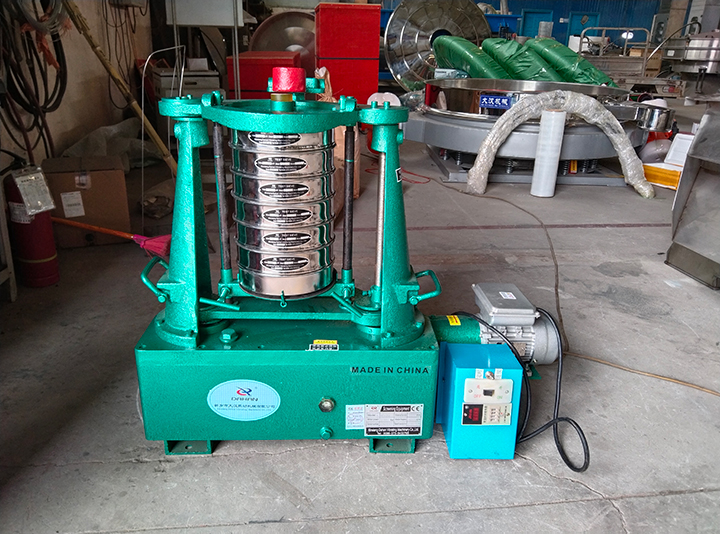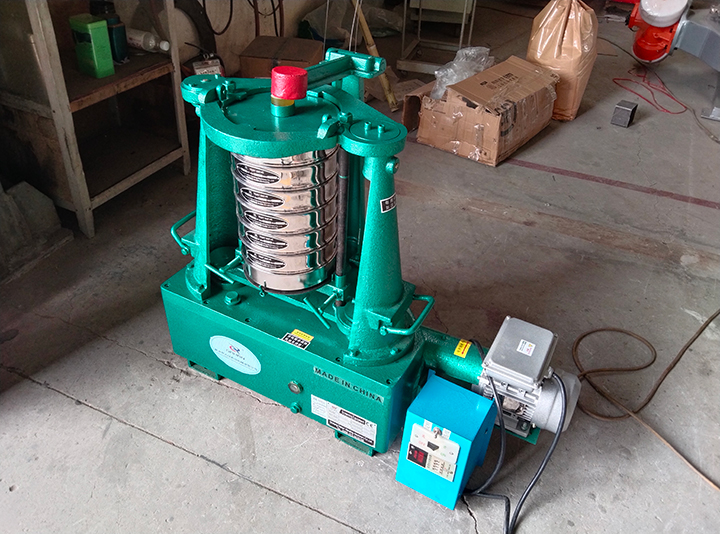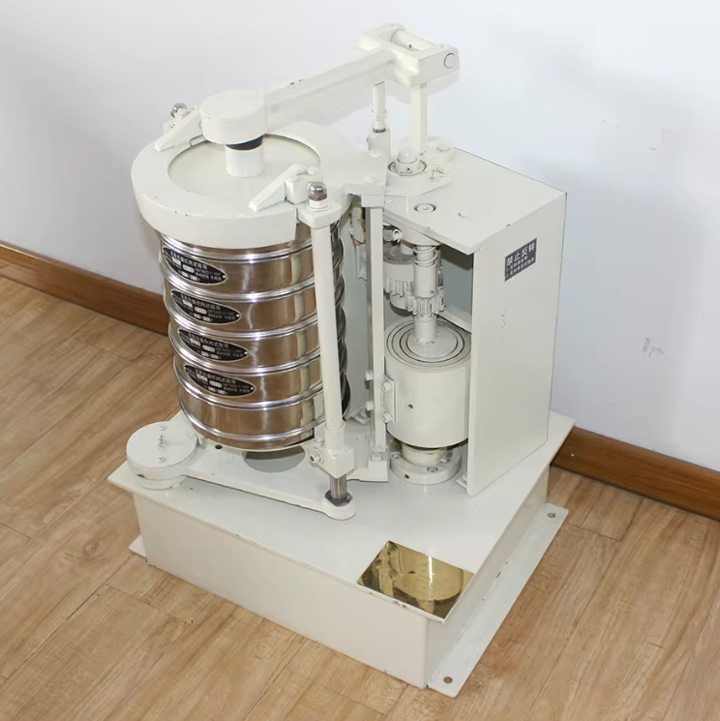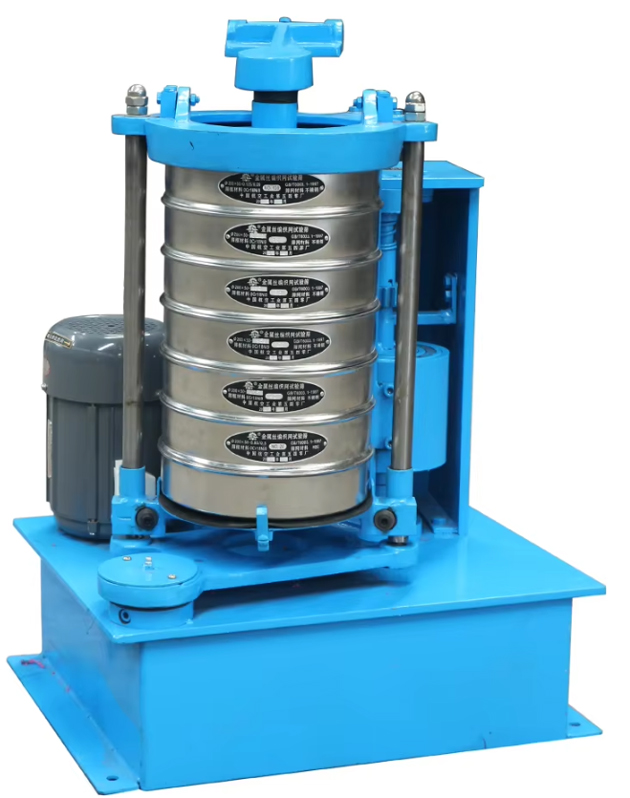BZJ gear type slap screen is a commonly used test equipment in laboratory particle size analysis. This series of equipment uses unique mechanical movement to achieve accurate separation and evaluation of material particle size. Common models are mainly distinguished according to the diameter of the standard test sieve they can adapt to. For example, BZJ-200 is mainly suitable for test sieves with a diameter of Φ200mm, while BZJ-300 is suitable for test sieves with a diameter of Φ300mm. In terms of screening mesh, the BZJ series slap screen can be compatible with a variety of standard sieves ranging from a few millimeters (such as 10mm) to microns (such as 0.038mm, about 400 mesh), covering a wide range of particle size analysis.

BZJ gear type slap screen is mainly used for particle size analysis and screening tests of various powders, particles, liquids and other materials. Common models are usually named after the diameter of the sieve frame. Among them, BZJ-200 and BZJ-300 are two more common models.
BZJ-200 Slap Screen
Screen size: mainly compatible with standard test sieves with a diameter of Φ200mm.
Sieving mesh: can be screened from large-aperture sieves of several millimeters (such as 10mm) to fine-mesh sieves of micron level (such as 0.038mm, i.e. about 400 mesh), depending on the selected test sieve.
Processing capacity: The single processing capacity is relatively small, usually between tens of grams and hundreds of grams, suitable for precise laboratory small batch analysis. For example, it may take about 5-15 minutes to screen a 500-gram powder sample.
Features: usually more compact in design, small in space, suitable for laboratories with small sample requirements.
BZJ-300 Slap Screen
Screen size: mainly compatible with standard test sieves with a diameter of Φ300mm.
Screening mesh: can also be used with standard sieves of various meshes, from large particles to fine powders, the mesh range is similar to that of the Φ200mm sieve, but the screening area is larger.
Processing capacity: The single processing capacity is significantly larger than that of the BZJ-200 model, ranging from hundreds of grams to several kilograms, which is suitable for laboratories or small production tests that need to process larger samples. Screening 1 kg of powder sample may take similar time, but the processing efficiency is higher.
Features: Relatively large volume and more solid structure to accommodate larger diameter sieve frames and heavier sample loads.
BZJ gear type slap screen has shown many significant advantages in the field of laboratory screening by virtue of its unique working principle and structural design:

High screening efficiency: BZJ gear type slap screen can effectively disperse samples, reduce sieve hole blockage, and ensure that the material fully contacts the screen through a composite motion mode combining slapping and rotation, thereby significantly improving screening efficiency and speed.
High screening accuracy and good repeatability: Mechanical slapping and precise motion control make the parameters of each screening test (such as slapping frequency and vibration amplitude) highly consistent, thereby ensuring the accuracy and good repeatability of the screening results, which is crucial for scientific research and quality control.
Easy operation and low maintenance: The equipment is simple in design, the operation process is intuitive, and it is easy to use. Its sturdy and durable gear transmission mechanism ensures the stable operation of the equipment and low daily maintenance workload.
Wide range of application: It can be used with standard test sieves of various mesh sizes, and is suitable for particle size analysis of various powders, particles, liquids and other materials. Whether it is fine powder or coarse particles, reliable screening results can be obtained.
Simulate manual screening, the results are more representative: The slapping motion simulates the slapping action of manual screening. For some materials that are easy to agglomerate or carry static electricity, this slapping action can more effectively make them pass through the sieve holes, making the screening results closer to the material state in actual applications.

As an important laboratory instrument, the core of the application of BZJ gear type slap screen is to perform accurate particle size analysis and screening tests on various materials. It is mainly used in the following aspects:
Particle size distribution determination: By placing the sample to be tested on a series of standard test sieves with different mesh sizes, the sample particles are vibrated and slapped, and pass through different sieve holes according to the particle size, and finally stay on the corresponding sieve layer. By weighing the mass of the material on each layer of the sieve, the particle size distribution ratio of the sample can be accurately calculated, providing key data for material property research, product quality control and process optimization.
Material purity detection
BZJ gear type slap screen is also used to detect whether there are oversized or undersized particle impurities in the material. By setting a specific sieve size, particles that do not meet the specifications can be effectively separated to evaluate the purity and uniformity of the material.
Sample preparation and screening
BZJ gear type slap screen is often used to pre-treat samples before other experimental analyses (such as chemical analysis, physical property testing). For example, samples with a specific particle size range are screened out for subsequent tests to ensure the accuracy and consistency of the experimental results.
Quality control
BZJ gear type slap screen is used for warehousing inspection of raw materials, process control of semi-finished products, and quality inspection of final products. Through regular screening and testing, the production process can be discovered and adjusted in time to ensure that the product particle size meets the standard.

The BZJ gear type slap screen has an ingenious structural design, which aims to simulate the manual screening process through mechanical movement to achieve a good screening effect. Its main structural components and the functional synergy of each part jointly realize the particle size analysis of powders, particles and other materials. BZJ gear type slap screen usually consists of the following core parts:
Machine base (base): as the support platform of the entire screen machine, it bears the weight of all moving parts and screen groups, and provides a stable working foundation to reduce vibration and noise during operation.
Motor: provides power source. The motor drives the reduction mechanism through belts or gears to convert electrical energy into mechanical energy to drive various movements of the screen machine.
Reduction mechanism (gear transmission mechanism): The reduction mechanism converts the high-speed rotational motion of the motor into low-speed, high-torque motion suitable for screening. It usually consists of a series of gears to accurately control the speed of the turntable and the action frequency of the slap mechanism.
Turntable (screen tray/tray): a horizontally rotatable circular platform for placing and fixing standard test screen groups. During the screening process, the turntable will make regular horizontal rotational motion to evenly disperse the material on the screen.
Top rod/slap mechanism: The reduction mechanism periodically lifts the top rod through a cam or a special gear bevel design, and then allows it to fall freely and slap the gland on the top of the screen group. This slapping action can effectively shake the material on the screen, prevent blockage and agglomeration, and promote the material to pass through the screen holes.
BZJ gear type slap screen, with its structural characteristics and operating mode, demonstrates its practicality in material screening tests in a laboratory environment. The equipment achieves stable and repeatable screening action through mechanical transmission, providing researchers and technicians with a means to obtain accurate particle size distribution data. During use, it is necessary to select the appropriate screen combination and screening time according to the specific material characteristics and the required analysis accuracy. In terms of maintenance, regular inspection and maintenance of the equipment transmission parts and ensuring the cleanliness and integrity of the test sieve are the basis for ensuring its long-term stable operation.
Address:China,Yanjin county forest park gate to the west 1000 meters north road.